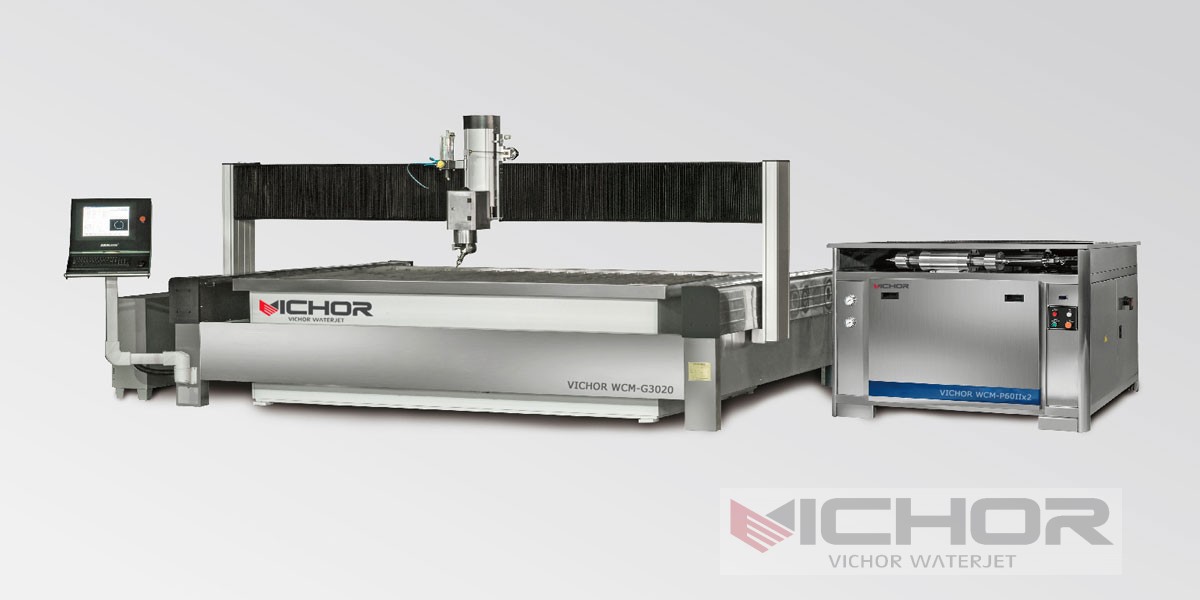
Your Content Goes Here
Polycarbonate is a versatile and durable engineering thermoplastic known for its high impact resistance, optical clarity, and thermal stability. From protective barriers and machine guards to intricate architectural models and electronic components, its applications are vast. However, these very properties that make it so useful also make it challenging to cut with traditional methods. Water jet cutting polycarbonate has emerged as the superior solution for shaping this material with precision and care. This article delves deep into the process, exploring its benefits, applications, and how to achieve the best results, with a special focus on equipment from VICHOR.
What is Water Jet Cutting and Why is it Ideal for Polycarbonate?
Water jet cutting is a cold-cutting process that uses a high-pressure stream of water, often mixed with an abrasive substance, to slice through materials. For softer materials like polycarbonate, a pure water jet (without abrasive) is frequently employed.
The process begins with a high-pressure pump, like those manufactured by VICHOR, which intensifies water pressure to extremes—often reaching 60,000 to 90,000 PSI. This pressurized water is then focused through a small orifice, typically made of sapphire or diamond, creating a supersonic jet that can cleanly erode the material it is aimed at.
Why is it perfect for polycarbonate?
Cold Cutting Process: Unlike laser or plasma cutting, water jet cutting generates almost no heat. This is critical for polycarbonate, which is sensitive to heat. Thermal-based methods can melt the edges, causing micro-fractures, discoloration (yellowing), and releasing potentially harmful fumes. Water jet cutting preserves the material’s structural integrity and optical properties.
No Mechanical Stress: Traditional machining like sawing or milling applies significant force and vibration to the workpiece, which can lead to cracking or chipping in polycarbonate. Water jet is a non-contact process, applying minimal lateral force and eliminating this risk.
Material Versatility: A single water jet machine can cut not just polycarbonate but also a wide range of other materials (metals, stone, composites, rubber), making it an incredibly versatile tool for fabrication shops.
Key Advantages of Using a Water Jet for Polycarbonate Projects
Choosing water jet cutting polycarbonate offers a multitude of benefits that directly impact the quality of the final product and the efficiency of the production process.
Unmatched Precision and Complex Geometries
Water jets are capable of exceptionally precise cuts, with tolerances as tight as ±0.005 inches (±0.13 mm). The stream is incredibly narrow (0.02″ to 0.05″), allowing for intricate details, sharp corners, and complex patterns that would be difficult or impossible to achieve with mechanical tools. This makes it ideal for producing complex prototypes, custom logos, and finely detailed components.
Exceptional Edge Quality
A well-calibrated water jet produces a smooth, satin-finish edge on polycarbonate. There is no heat-affected zone (HAZ), meaning the edges are stress-free and retain the full strength and clarity of the original material. This eliminates the need for extensive secondary finishing operations in many applications, saving time and labor costs.
Speed and Efficiency
While not always the fastest method for very simple cuts, water jets are highly efficient for complex parts and nesting. Modern software allows for optimal nesting of parts on a sheet of polycarbonate, minimizing waste. The ability to cut multiple identical parts with consistent accuracy in a single setup drastically reduces production time.
Environmental and Safety Benefits
Since the process uses water and, in the case of pure water cutting, no abrasives, it is environmentally friendly. There are no toxic fumes or dust particles produced, which is a significant advantage over cutting methods that can release harmful BPA-containing dust or fumes from melted polycarbonate.
Applications: Where is Water Jet Cut Polycarbonate Used?
The unique advantages of water jet cutting polycarbonate have led to its adoption across a wide spectrum of industries.
Aerospace and Transportation: For creating lightweight, strong, and clear components like aircraft interior panels, cockpit instrumentation covers, and protective train windows.
Medical Industry: To fabricate precise components for medical devices, equipment housings, and protective barriers that require high clarity and no contaminating residues.
Architecture and Design: For producing intricate decorative panels, signage, museum displays, and even furniture where a flawless, polished appearance is paramount.
Electronics: Cutting clear protective covers for displays, touchscreens, and instrument panels without inducing internal stresses that could lead to failure.
Prototyping: Rapidly creating accurate prototypes from polycarbonate sheets for fit, form, and function testing before moving to mass production.
Achieving the Perfect Cut: Best Practices and the VICHOR Advantage
To get the best results when water jet cutting polycarbonate, several factors must be considered. Partnering with a quality equipment manufacturer like VICHOR ensures you have the technology to execute these practices effectively.
Pure Waterjet vs. Abrasive Waterjet
For thinner polycarbonate sheets (typically up to 1/4 inch or 6 mm), a pure waterjet is sufficient. It delivers a glass-smooth edge. For thicker sheets, a fine abrasive (like 80 or 120 grit garnet) must be introduced to the stream to erode the material. The key is to use the minimal amount of abrasive necessary to avoid creating a frosted or matte appearance on the cut edge.
Feed Rate and Pressure Optimization
Cutting too fast can lead to striations (wavy lines) on the cut edge or an incomplete cut. Cutting too slowly can oversaturate the material and widen the kerf. Finding the optimal feed rate for a given thickness and pressure is crucial. Modern **VICHOR** systems come with advanced controllers that allow for precise manipulation of these parameters, ensuring a clean cut from start to finish.
Nozzle Standoff Distance
The distance between the nozzle and the material is critical. A consistent, correct standoff distance ensures a consistent kerf width and edge quality throughout the cut.
Material Support
Polycarbonate sheet must be properly supported on the cutting grid to prevent it from vibrating or deflecting under the force of the water stream, which can compromise edge quality. Using a support material that minimizes back-splash is also important to prevent water from marring the underside of the sheet.
Common Questions and Challenges in Water Jet Cutting Polycarbonate
Even with its many advantages, operators often have questions about the process.
Will the water damage or cloud the polycarbonate?
This is a common concern. While polycarbonate is hygroscopic (it absorbs minimal moisture), the brief exposure to water during cutting does not damage it. The water is highly focused and immediately drains away. Any residual water is simply wiped off, leaving the material’s clarity intact. Clouding is not an issue with the cutting process itself.
How do you prevent “whiskers” or burrs on the bottom edge?
Sometimes, a slight burr or “whisker” can form on the exit side of the cut. This is usually a result of a slightly worn nozzle or an incorrect feed rate/pressure combination. It is typically very minimal on polycarbonate and can be easily removed with light sanding or deburring tools. Optimizing machine parameters, as easily done on a **VICHOR** waterjet, eliminates this issue.
Is the process loud?
Water jet cutting is quieter than many mechanical cutting methods, but the pump and the sound of the stream impacting the water in the catcher tank do generate noise. Typically, systems operate at around 80-85 decibels, requiring standard hearing protection in an industrial environment.
How does cost compare to other methods?
The initial investment in a water jet system is significant. However, the total cost of ownership must be considered. The elimination of secondary finishing, reduced material waste from efficient nesting, and the ability to cut virtually any material with one machine often lead to a strong return on investment and a lower cost per part for complex projects.
Can water jets create tapped holes and threads?
While a water jet can cut the profile for a hole, it does not create threads. The edge is suitable for tapping as a secondary operation. The precision of the water jet ensures the hole is accurately positioned for this subsequent step.
Water jet cutting polycarbonate represents the perfect marriage of material and technology. It leverages the cold, non-contact nature of water to overcome the challenges posed by traditional cutting methods, delivering unparalleled precision, flawless edges, and preserved material properties. Whether you are a large manufacturer or a specialized fabricator, understanding this process is key to unlocking the full potential of polycarbonate. By employing best practices and utilizing reliable equipment from brands like VICHOR, you can ensure consistently high-quality results for even the most demanding applications.
continue reading
Related Posts
- 1460 words7.4 min read



